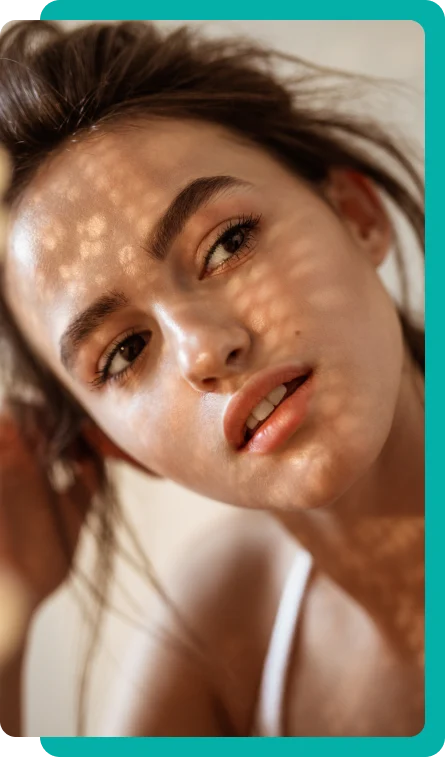For Patients
About
For Providers
Locations
Blog
Contact
Menu
Cheek fillers don't directly treat undereye hollows, but they can positively influence the area. When injected into the cheeks, fillers provide support and lift to the midface. This can improve the transition between the cheeks and lower eyelid, reducing the look of dark circles, tear troughs, and hollowing under the eyes.
Hyaluronic acid (HA) fillers are commonly used for both cheek and undereye treatments. These fillers are compatible with the body and effective for adding facial volume. As we age, we experience bone loss and fat pad shifts in areas like the cheeks. HA fillers can address these changes by simulating the effect of fuller, more youthful cheekbones.
While cheek filler results aren't permanent, they offer a long-lasting solution to combat signs of aging in the midface and undereye area.

Though cheek fillers are injected in the midface, they can also indirectly affect the area under the eyes.
Here's how:
The cheeks and under eye area are anatomically linked by the tear trough. This is the hollow or groove between the eye bag and the cheek. When cheek volume is lost with age, it can accentuate undereye hollows and shadows.
Lifting and filling the cheeks provides support to the midface. This gently lifts the lower eyelid and can minimize the appearance of undereye bags and circles.
In some cases, filler is strategically placed along the infraorbital rim and tear trough to directly treat undereye hollowness.
The key is maintaining facial balance and harmony. When performed correctly, cheek fillers can make the under eye area look refreshed and youthful.
Cheek fillers tend to work best for mild to moderate undereye concerns like:
The most effective technique is called structural volumizing. This involves placing the filler deeper in the cheek, between the bone and muscle. The results can last up to 2 years.
Cheek fillers are ideal for:
They are often used in combination with direct undereye filler for a complete rejuvenation.
Not all cheek filler injections are created equal when it comes to improving undereye hollows. The injection technique used makes a big difference:
| Structural Volumizing | Traditional Superficial Injection |
| Filler placed deep between bone and muscle | Filler injected superficially in subcutaneous fat layer |
| Creates projecting, lifting effect | Adds volume but limited lifting ability |
| Results last longer (12-18 months) | Results last 6-12 months typically |
| Indirectly improves laugh lines by lifting midface | Limited impact on laugh lines |
As you can see, Structural Volumizing allows cheek filler to have a more comprehensive impact, including:
For best results, cheek fillers should be part of an overall treatment plan that considers your full facial aesthetics and goals. Many patients combine cheek and undereye filler for synergistic effects.
While cheek fillers offer many benefits, there are some potential downsides to consider:

Here are some tips for ensuring you get the most natural, long-lasting results from cheek fillers:
Cheek fillers can be an effective treatment for reducing the look of undereye hollowness when performed correctly. Adding structural volume to the midface provides lift and support which can minimize the appearance of bags and dark circles.
For optimal, natural-looking results, choose an experienced injector and consider combining cheek fillers with direct undereye fillers. While not a cure-all, cheek fillers can rejuvenate the eyes and restore a more youthful contour when used appropriately.

Join Dr. Lanna & Dr. Doshi for a Transformation
Unlock the possibilities with our certified facial and oculofacial plastic surgeries. Attend our free webinar to find out how we can tailor solutions for you, with financing available to fit your budget.
